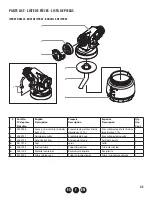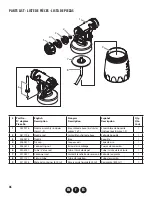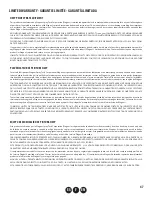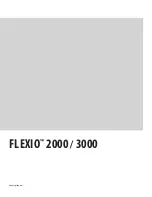
eN
11
PRoPeR SPRAYiNG TeChNiqUe
i
use the images and guidelines below in order to assist you in achieving the desired spray pattern for your project.
these are meant to be general starting points - you may have to slightly modify certain controls on the system in
order to get the exact performance you need.
it is recommended that the trigger first be pulled partially in order to start the turbine before a spray pass
is made.
lARGe SURfACe PRojeCTS
generally, high material flow and air power are
needed for spraying large surface areas, such as walls
and decks.
the iSpray nozzle is ideal for these applications and
is designed for broad coverage in either horizontal
or vertical spraying.
•
the air cap position will determine the
movement direction of the spray gun.
SMAll SURfACe PRojeCTS
generally, low material flow and air power are needed for spraying smaller
surface areas, such as corners, lattice, or spindles.
For this type of project, reduce power, material flow and switch to a narrow
width when using the iSpray nozzle.
NoTeS:
•
If you feel the material is going on too thin, increase the material flow.
•
If you feel the material is going on too thick, decrease the material flow even further or move the spray gun further away from
the surface.
besides adjusting the controls, other factors that should be considered when spraying:
•
Distance from the spray object - if you are too far from the spraying surface, the material will go on too thin, and vice versa.
•
Material thickness* - if the spray pattern runs and/or is too splotchy, the material may need to be thinned.
•
Spray gun movement - moving the gun too quickly will cause the spray pattern to be too thin and excess overspray. moving
the gun too slowly will cause the spray pattern to be too coarse or thick.
i
*only thin the material if absolutely necessary to improve spray performance. optimal spray performance should
be acheived simply by adjusting the various controls on the unit.
If the material needs to be thinned, dilute the material in steps of 5% - 10% until the desired spray pattern is acheived.
i
If after following the guidelines on these two pages you are still not getting the spray performance you need, refer
to the ‘troubleshooting’ section on page 15.
=
oR






































